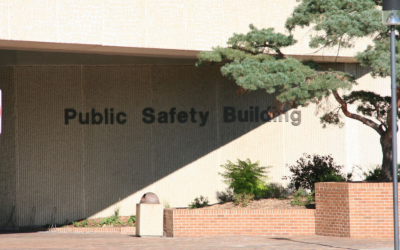
Airlines are ready to fly again! As states begin to open up for business, airport and airline officials are preparing for takeoff – but the trip may be a little different.
At the Dallas-Fort Worth International Airport, both Southwest and American airlines are relaunching flights to Spain, the Caribbean, and Mexico. Scheduled flights will soon include Germany, Japan, Ireland, and Korea.
Thousands of flights were cancelled over the past several months because of COVID-19. The U.S. Department of Transportation has urged airlines to move quickly in refunding payments but that’s no small task. To expedite refunds, a number of airlines are using software that shortens the time it takes. This particular type of software is able to handle each refund in about five minutes rather than the normal 20 minutes that it usually takes. As shocking as it sounds, a bot, incorporated in the software, can automatically extract ticket information from customer data on file, open an airline’s booking, refund applications, and issue an e-voucher for future travel. Airlines with this type of software can process 4,000 refunds a day without any assistance from an employee. If this sounds futuristic, it’s because it is. And, it is another example of what to expect in the ‘new norm’.
Just recently, the U.S. Travel Association, along with medical experts, businesses, and selected organizations, presented a plan to President Trump and state governors detailing guidance for travel called “Travel in the New Normal.” The document is all about reducing risks for travel and it describes in detail what passengers can expect in the near future.
The number of jobs lost in the travel industry was projected at about 8 million as of May 1, 2020. And, industry officials report that the travel-related economic impact of coronavirus is about nine times worse than the impact resulting from the horrific 9/11 disaster. While those numbers are extremely negative, the expectation is for the industry to come back strong and passenger safety will be paramount.
Since 9/11, the use of technology for safety in airports has expanded exponentially. Additional safeguards are being discussed now with some already making an appearance in terminals. The Pittsburgh International Airport, for instance, has become the first U.S. airport to deploy autonomous robotic cleaners with integrated ultraviolet lights.
Other safety-related technology available for terminals includes construction of an area that disinfects passengers as they walk through, thermal cameras that scan crowds for individuals with feverish temperatures, and facial recognition at check-in stations. Along with new technology, there will be more Plexiglas at check-in counters, and sanitizing dispensers will be abundant and terminals will accommodate periodical closings of passenger areas for deep cleanings.
Since March 2020, airports have received approximately $10 billion in grants funding as a result of COVID-19. Additionally, another $1 billion in grant funding was made available to 439 airports from the Federal Aviation Administration (FAA). That total includes $731 million in Airport Improvement Program (AIP) grants and an additional $455 million in Supplemental Discretionary grants. The result is that, despite financial setbacks, many airports will have funding that allows officials to move forward with upgrades and expansions.
Alabama
Twenty-five Alabama airports have received $60 million in funding from the FAA. Numerous projects are planned. Alabama’s Huntsville International Airport plans to spend $25 million to reconstruct runway lighting, rehabilitate a runway, acquire an aircraft rescue and fire fighting vehicle, and install security cameras. The Mobile Downtown Airport received $8.9 million and will use the funding to rehabilitate a runway. The Birmingham-Shuttlesworth International Airport plans to spend $2.8 million to improve airport drainage and $7.3 million to rehabilitate a runway.
Mississippi
The city of Vicksburg has hired an engineering firm to design a massive upgrade to the Vicksburg Municipal Airport. The project will include the acquisition of additional land to expand the runway, construction and renovation of buildings, improvement of taxiways, and construction of additional hangars. These upgrades are being launched to make the airport part of a multi-modal system centered on a proposed new port for Vicksburg or the possible expansion of the existing port.
Idaho
The Boise Airport plans to solicit bids for construction of a rental car garage and lobby. The project consists of a seven-level, 950-stall, open garage with fueling and car wash facilities on the ground floor. It also includes a single-level customer lobby and rental car office with a connecting walkway, restrooms, and elevators. While this project is underway, airport officials also plan to solicit for construction bids for concourse A. The elevated concourse and walkway will have a service tunnel, retail space, and offices. The second project includes passenger boarding bridges, furniture, moving sidewalks, fencing, elevators, and an apron.
Wyoming
Jackson Hole Airport has announced plans to close its airport to replace a runway and provide a $35 million treatment system for snow. The current firm handling the design will also be responsible for the solicitation for construction. This airport sits on 533 acres that is leased from Grand Teton National Park.
Utah
The Ogden-Hinckley Airport is in the final stages of developing a 20-year master plan. The most current draft document outlines a plan to make the airport a major economic engine for the region. Officials want the airport to serve general aviation, commercial air service, and play a significant role in recruiting additional aeronautical businesses. The plan includes acquiring adjacent parcels of land, redeveloping hangars, building new road entrances, and expanding the facility’s flight line.
The ‘new norm’ will present somewhat of a different environment for airline passengers, but U.S. airports will continue to evolve, expand, upgrade safety, and find new ways to make traveling a pleasant and safe experience. America’s airports are a significant component of the country’s global competitiveness, and the anticipated outcome is extremely positive for airlines in the future.
Strategic Partnerships, Inc. is one of the leading government contracting consulting firms in the country. Contact them today to learn more about growing your public sector business.







